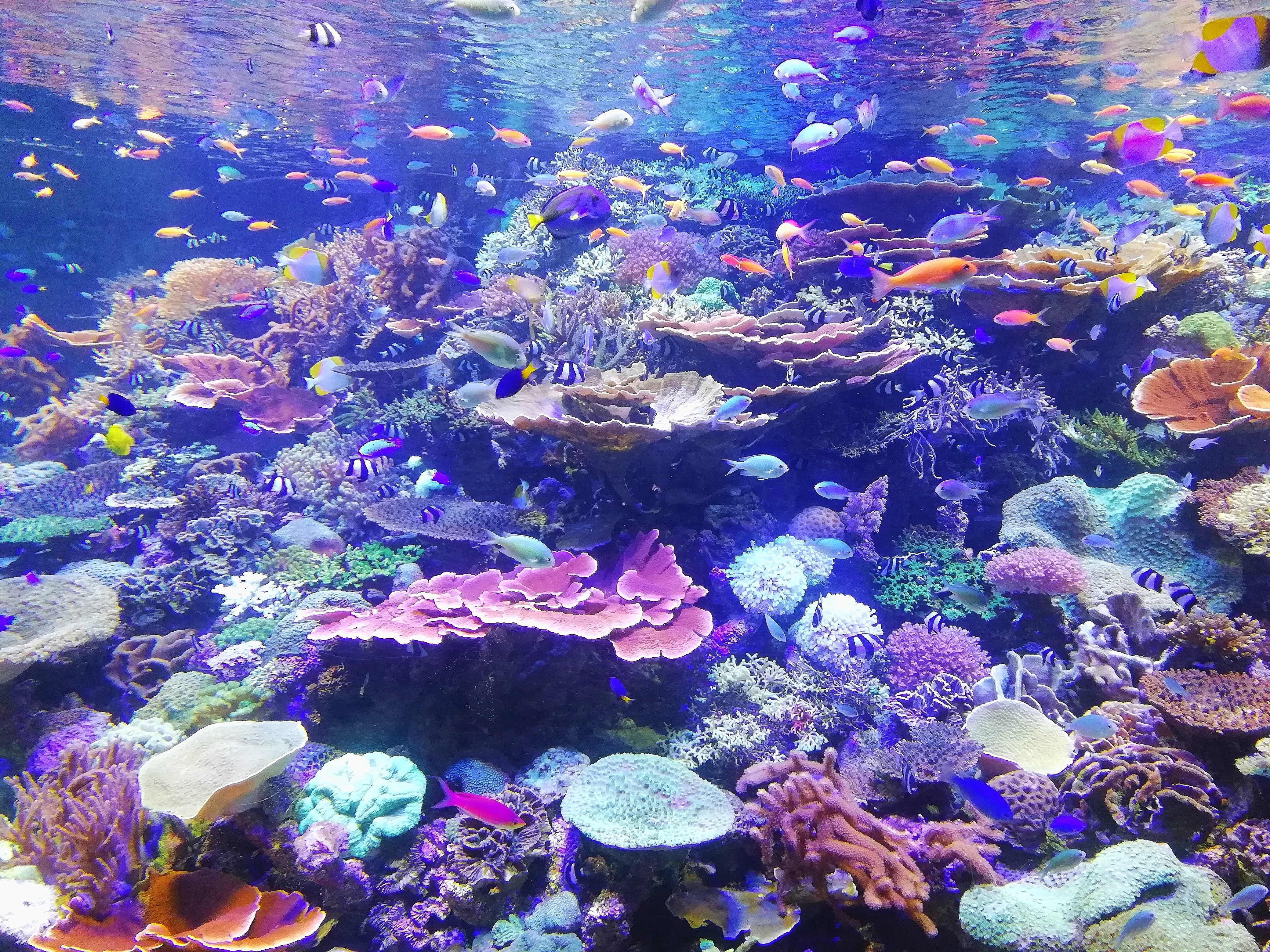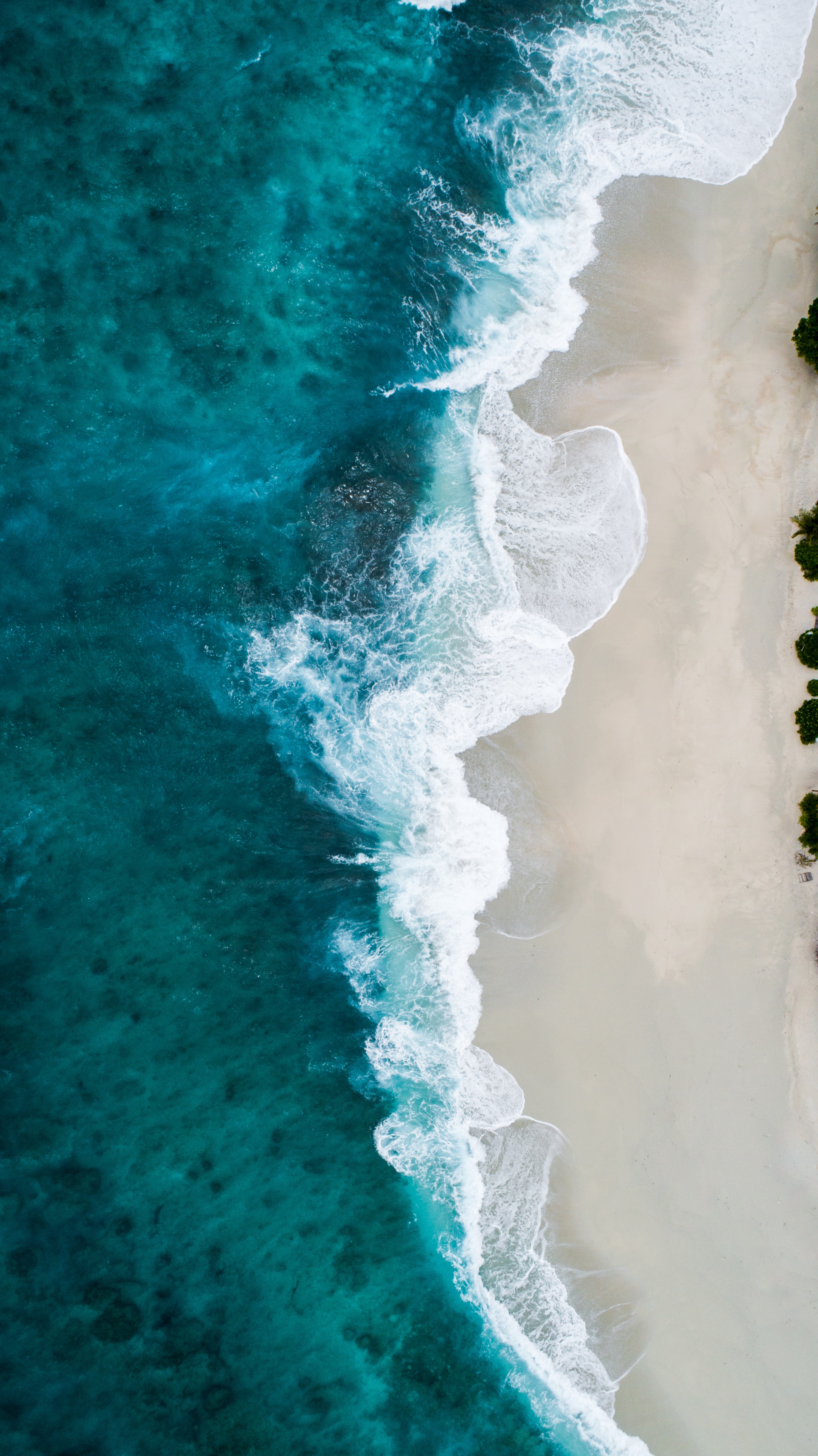Ocean Habitat
By Avery Hurt, Designed by Jay Wang
From outer space Earth looks like an awesome blue marble. That’s because most of Earth’s surface—more than 70 percent—is covered by oceans.
Earth Underwater

Oceans are areas of salty water that fill enormous basins on the Earth’s surface. Even though Earth has one continuous body of saltwater, scientists and geographers divide it into five different sections. From biggest to smallest, they are the Pacific, the Atlantic, the Indian, the Southern, and the Arctic Oceans. Oceans are deep as well as wide. On average an ocean is a little over two miles deep. The water in the Mariana Trench is almost seven miles deep.
Climate Control

Oceans help keep Earth’s climate habitable. By moving water around the globe, the oceans help to keep places from getting too hot or too cold. Oceans also help keep the planet warm. In the same way that hot water in a bathtub stays warm longer than hot chocolate in a small cup, the vast amount of warm water stores heat in the ocean. Then ocean currents carry that heat around the planet. Without oceans, the Earth would be an icy rock.
Ocean Life

The words “ocean” and “sea” are often used to mean the same thing. A sea, however, is a small area of an ocean, usually with land on several sides. The Mediterranean, nestled between Africa and Europe, the Baltic in northern and central Europe, and the Caribbean between North, Central, and South America are all seas.
Scientists think that up to 91 percent of marine species have not yet been identified; but there could be as many as 700,000 of them! Most—95 percent—are invertebrates, animals that don’t have a backbone, such as jellyfish and shrimp. The most common vertebrate (an animal with a backbone) on Earth is the bristlemouth, a tiny ocean fish that glows in the dark and has needlelike fangs.
Some of the smallest animals on Earth can be found in the ocean. Sea animals like zooplankton are so small you can see them only with a microscope. Big fish swim through these waters too, such as great white sharks, manta rays, and ocean sunfish.
The largest animal ever to live on Earth is an ocean mammal called the blue whale. It’s as long as two school buses! Dolphins, porpoises, and sea lions are also ocean-dwelling mammals.
The ocean teems with plant life. Most are tiny algae called phytoplankton—and these microscopic plants have a big job. Through photosynthesis, they produce about half of the oxygen that humans and other land-dwelling creatures breathe. Bigger algae like seaweed and kelp also grow in the ocean and provide food and shelter for marine animals.
Watery Habitats

Temperature, ocean depth, and distance from the shore determine the types of plants and animals living in an area of the ocean. These regions are called habitats.
Coral reefs are one type of habitat. When tiny animals called polyps die, their skeletons harden so other polyps can live on top of them. Then those polyps die, and more move in. After thousands of years, this becomes a complex structure called a coral reef that provides food and shelter for many kinds of ocean animals. In fact, corals reefs have been called the rainforests of the sea because of the wide variety of animals found there. Animals such as seahorses, clownfish, and sea turtles all live on coral reefs. And corals themselves are animals! They grab food from the water using tiny tentacle-like arms.
Kelp forests found along the coastlines of the Pacific and Antarctic Oceans also provide food and shelter for marine life. These large, brown, rubbery plants have hollow, globe-shaped growths on the leaves called pneumatocysts that help the plants rise to the surface. Sea lions, whales, shore birds, and other ocean animals make meals of the smaller critters that hide in the leaves.
Other ocean habitats aren’t actually in the ocean, such as estuaries. Estuaries are areas where rivers and oceans meet and have a mix of saltwater and freshwater. Oysters, crabs, and many birds like great herons and egrets live in estuaries.
Scientists estimate that we’ve only explored 5 percent of the ocean. Maybe you’ll be the next person to discover a new species of fish or a deeper underwater trench!






